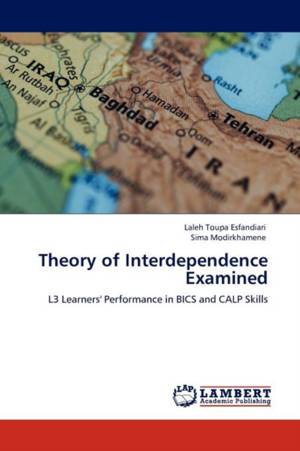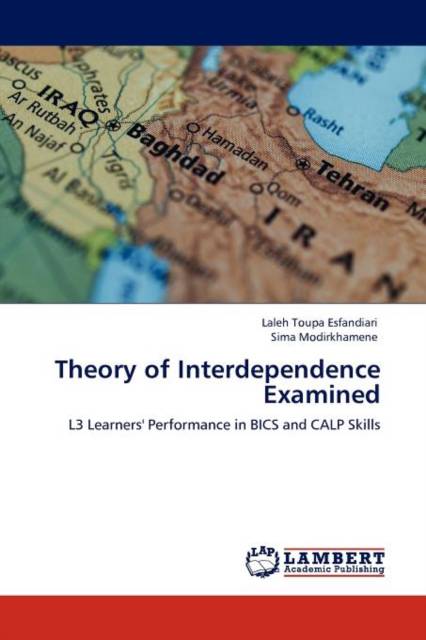
- Afhalen na 1 uur in een winkel met voorraad
- Gratis thuislevering in België vanaf € 30
- Ruim aanbod met 7 miljoen producten
- Afhalen na 1 uur in een winkel met voorraad
- Gratis thuislevering in België vanaf € 30
- Ruim aanbod met 7 miljoen producten
Zoeken
Theory of Interdependence Examined
L3 Learners' Performance in BICS and CALP Skills
Laleh Toupa Esfandiari, Sima Modirkhamene
Paperback | Engels
€ 58,95
+ 117 punten
Omschrijving
The present study aimed at finding the possible difference between the performance of two different groups of bilinguals (dominant bilinguals and balanced bilinguals/biliterates) compared with regard to their performance on two sets of skills i.e. BICS (Basic Interpersonal Communicative Skill) and CALP(Cognitive Academic Language Proficiency). The study also aimed at finding out the possible interdependence of these skills according to the theory of Common Underlying Proficiency, proposed by Cummins (1979). It was hypothesized that different types of bilinguals perform the same on tests of reading as a CALP skill and speaking as a BICS skill. A total number of 96 senior EFL students from the universities of Kurdistan, Iran, and Salahaddin, Iraq, were included in the study. Fifty two (28female, 24male) were biliterate Kurdish-Arabic students from Salahaddin University in Kurdistan, Iraq. The other 44 (12 female, 32 male) were Kurdish-Persian bilingual students of English from Kurdistan University in Kurdistan, Iran. The age range of the subjects was 21-24. Language typology, age, language background, and gender were kept constant.
Specificaties
Betrokkenen
- Auteur(s):
- Uitgeverij:
Inhoud
- Aantal bladzijden:
- 120
- Taal:
- Engels
Eigenschappen
- Productcode (EAN):
- 9783844321739
- Verschijningsdatum:
- 12/03/2011
- Uitvoering:
- Paperback
- Afmetingen:
- 152 mm x 220 mm
- Gewicht:
- 186 g

Alleen bij Standaard Boekhandel
+ 117 punten op je klantenkaart van Standaard Boekhandel
Beoordelingen
We publiceren alleen reviews die voldoen aan de voorwaarden voor reviews. Bekijk onze voorwaarden voor reviews.








